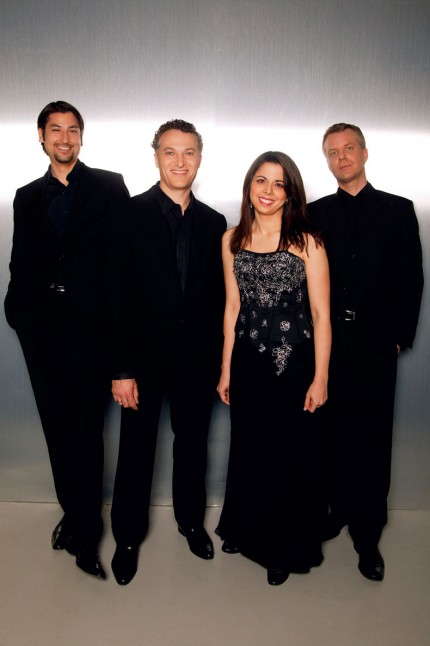Pacifica Quartet opens season with compelling, mostly Russian program

Following the Pacifica Quartet’s remarkable Shostakovich cycle last winter, the ensemble opened its regular Hyde Park season Sunday afternoon at Mandel Hall with a mostly Russian program that echoed and expanded upon that compelling journey.
If not the most substantive of 20th-century Russian composers, Nikolai Myaskovsky is certainly one of the most prolific, with 27 symphonies, 13 quartets, nine piano sonatas, and concertos for cello and violin among other works in his oeuvre.
Myaskovsky’s String Quartet No. 13, his last in the genre and one of his final works, opened Sunday’s program. Cast in four movements, the quartet opens with a darkly ruminative Moderato theme, soon contrasted with a dance-like second motif. The music is imbued with a sense of yearning and a valedictory melancholy, conveyed with vigor and tonal elegance by the Pacifica members.
After the opening section closes in a rather obligatory-sounding fugue, the second movement is marked “Presto fantastico,” the jumpy, driven music alternating with a more wistful, pensive middle section. The slow movement (“Andante con molto e molto cantabile”) is the heart of the work and led by first violinist Simin Ganatra, the Pacifica members conveyed the searching introspection with great tenderness and a sense of subdued solace.
The “molto vivo” finale is the weakest section with some moments of banality like the repeated-note pizzicatos for viola and cello. Still, if his final quartet doesn’t challenge the prevailing view of Miaskovsky as a competent second-rate composer of little individuality, the Pacifica Quartet gave his music sterling advocacy.
One appreciates Shostakovich’s stark, soul-baring achievement in the medium even more after hearing Myaskovsky. Written around the same time as his colleague’s last quartet, Shostakovich’s Quartet No. 3 is the first to show his mastery in the genre. From its ditzy opening dance-like tune for violin, the music soon turns angular, moving into darker regions with aggressive brutality mixing with plaintive instrumental solos, like desolate human voices.
The playing of the Pacifica was powerful and fully committed, particularly in the extended final movement with Masumi Per Rostad’s inward-looking viola solo and the final hushed cadences with the first violin’s little Jewish-inflected dance theme fading slowly into silence.
Fine and dedicated as Sunday’s performance of the Third Quartet was, it didn’t quite possess the knife-edged intensity heard in that work at the opening concert of the Pacifica’s Shostakovich cycle a year ago. Also, despite the committed individual playing, the long final movement wasn’t quite as tautly held either, seeming more distended and prolix.
The Pacifica decided to jettison the scheduled Third Quartet of Schnittke for some middle-period Beethoven, probably a wise decision considering the amount of bleak and depressive music already on the program.
The String Quartet in C major, Op. 59, no. 3, was given a graceful and firmly projected performance. The Andante was especially inspired, the Pacifica players conveying the unsettled introspection and twisting tonality with concentration and alert dynamic detailing, Beethoven’s music sounding even more uncommonly contemporary than usual in their hands.
Posted in Performances


